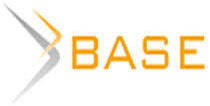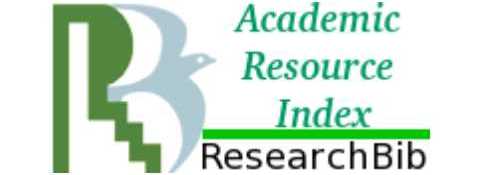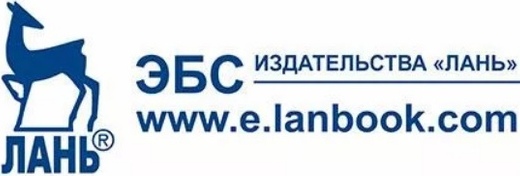Assessment of Dynamics of Payable Debt of Agricultural Holdings of the Russian Federation
The aim of the work is to assess the dynamics of short-term accounts payable of agricultural holdings of the Russian Federation in order to identify reserves for using this source of financing for their activities and optimizing liabilities. A relatively low share of short-term accounts payable under balance sheet item 1520 in the structure of liabilities of an average agricultural holding in Russia was revealed. During 2009 – 2022 the size of this article in liabilities averaged only 10.81%. It was determined that the average period of repayment of such debts (average duration of turnover) to suppliers was 1-2 months. In the composition of the entire accounts payable of the studied subjects, the dominance of bank loans and bonded loans was revealed: long-term and short-term. This dominance is explained both by the existence of mechanisms for state subsidizing of the bank loan rate for organizations in the agro-industrial complex, and by the problematic use of alternative sources of financing, for example, by increasing short-term debt to suppliers. In the activities of agricultural holdings, it is problematic to use short-term accounts payable to suppliers as a reserve for financing activities by increasing it due to the inclusion of the main suppliers in the holding structure. Thus, the implementation of such a reserve for optimizing the capital structure of the studied entities is unlikely. Despite the dominance of bank loans in the structure of liabilities of an average agricultural holding in Russia, the share of such types of capital sources gradually decreased over the period under study due to their displacement by their own capital. Despite such a positive trend, the business processes of the studied entities still remain highly dependent on both bank lending and government subsidies for the bank loan rate, which poses a significant risk for such organizations. The high proportion of expensive liabilities of the studied agricultural holdings allows us to conclude that the presence of internal financial problems is still a barrier to the activation of significant investment processes of such entities outside the agribusiness sector. A positive feature of agricultural holdings is revealed to counteract the deliberate creation of non-payments within their structure. Provided that all companies that make up the production and logistics cycles are part of the holding company, this feature protects the entire relevant chain.
Morhachov, I. V., Antamoshkina, E. N. and Gavrineva, N. S. (2024), “Assessment of Dynamics of Payable Debt of Agricultural Holdings of the Russian Federation”, Research Result. Business and Service Technologies, 10 (1), pp. 133-145. DOI: 10.18413/2408-9346-2024-10-1-1-1
















While nobody left any comments to this publication.
You can be first.
Adamaytis, L.A., Babintsev, A.I. and Adamaitis, I.M. (2020), “Analysis of Profitability of Own Capital and the Effect of the Financial Leverage”, Vector Economy, 11(53), pp. 42-56.
Ayushiyev, A.D. and Velikanov, Y.V. (2003), Corporate Finance in the Agricultural Sector of Russia, Irkutsk, Baikal State University.
Financial performance of public companies [Electronic], available at: https://www.list-org.com/ (Accessed 06 August 2023).
Golovaneva, E.A. and Ulyanova, J.A. (2022), “The Effect of Financial Leverage in Assessing the Efficiency of Capital Use in an Agricultural Organization”, Innovations in the agro-industrial complex: problems and prospects, 3 (35), pp. 186-191.
Gorelkina, I.A. and Gurina, D.S. (2020), “Application of the Financial Leverage Effect Indicator in Estimating the Creditworthiness of Borrowers”, Financial Gazette, 3 (50), pp. 24-30.
Kholodov, О.А. and Kholodova, M.A. (2018), “Peculiarities of Implementation of the Mechanism of Private Lending in the Agrarian Sector of Economics”, Bulletin of the Don State Agrarian University, 4-2 (30), 129-137.
Kholodova, M.A., Miroshnichenko, T.A. and Svyatogorov, N.A. (2021), “Financial and Economic State of Agriculture in the Conditions of Export-Oriented Strategy of Agro-Industrial Complex”, Vector of Science of Togliatta State University. Series: Economy and Management, 1 (44), 60-71. DOI 10.18323/2221-5689-2021-1-60-71.
Kuzmina, E.V. (2013), “Increase of System Effectiveness of Management by Finance of Agroholdings”, Bulletin of Volgograd State University. Series 3: Economy. Ecology, 1 (22), 173-180.
Listopad, Е.V. and Ronova, G.N. (2015), “The effect of financial leverage as a way to determine the financial risk of an organization”, Actual problems of the humanities and natural sciences, 12-3, pp. 73-77.
Morhachov, I.V. and Kolpakova, Е.А. (2023), “The need for targeting the return on assets and equity in agro-industrial enterprises”, Economics of agricultural and processing enterprises, 5, pp. 24-28. DOI 10.31442/0235-2494-2023-0-5-24-28.
Pekin, S.D. and Fokeeva, К.V. (2015), “Calculation of the effect of financial leverage based on financial statements”, Science Time, 10 (22), pp. 277-281.
Samygin, D. Yu., Baryshnikov, N. G. and Murzin, D. A. (2021), “The Method of Assessing the Efficiency of Use of Loan Funds in Agricultural Busines”, Management Accounting, 8-2, pp. 422-428.
Yashina, М. L., Neyf, T.V. and Treskova, T.V. (2020), Development of lending to agricultural organizations, Ulyanovsk, Ulyanovsk State Agrarian University. P.A. Stolypin. ISBN 978-5-6043484-5-1.
Zabaznova, D.O., Tatarkina, G.A. and Terekhina, N.V. (2016), “Management of Agroholding Financial Resources”, Bulletin of the APK Upper Volga, 3 (35), 17-21.